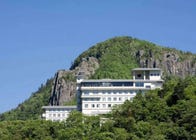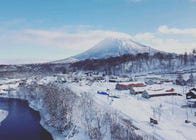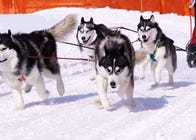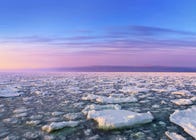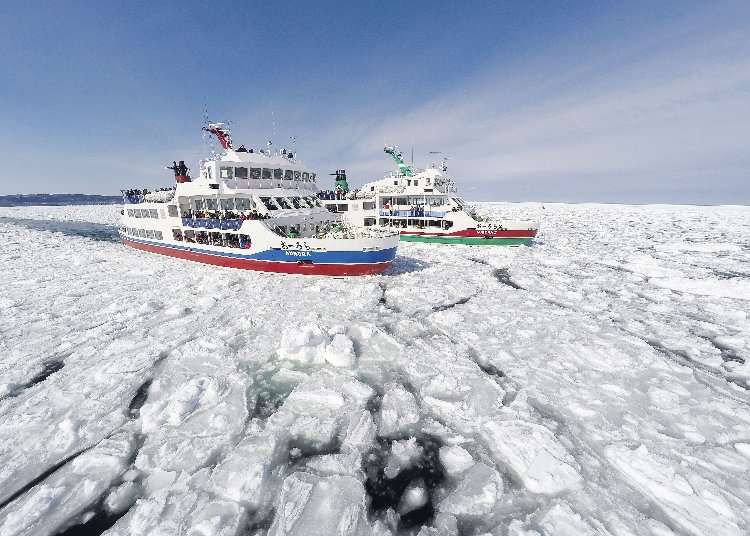
Hokkaido is covered with pure white snow in winter, showcasing a completely different beauty from other regions in Japan. Eastern Hokkaido is a paradise of natural wonder with many moving sights seen only in winter, like the red-crowned cranes that descend on the great plains and the drift ice in the Sea of Okhotsk.
What’s more, our eastern Hokkaido 5-day winter itinerary is brought to you by a local writer!
Travel easier with the JR Hokkaido Rail Pass
While renting a car in Hokkaido is handy, in winter, it can be hazardous for those not used to driving in snow. For this reason, we recommend using public transport in our southern Hokkaido winter itinerary. Conveniently, the JR Hokkaido Rail Pass offers unlimited travel on JR trains and buses at an excellent rate.
Day 1: New Chitose Airport → Sapporo → Asahikawa → Sounkyo
10:30 a.m.: From New Chitose Airport Station to Sapporo Station via the Rapid Airport train

First, take the Rapid “Airport” train from New Chitose Airport Station to Sapporo Station. There are 148 departures per day, and the trip takes about 40 minutes. Enjoy the scenery on your way to Sapporo!
11:10 a.m.: Recharge with some “station soba”

“Tachigui soba” restaurants serve soba and udon to patrons who stand while eating their noodles. When found on station platforms, it’s called “station soba” and originated in Edo period (1603-1868) food stands.
There used to be station soba shops all over Japan, but their number is dwindling. Sapporo Station still has shops open near platforms 5 and 6 as well as platforms 7 and 8. Try some traditional Japanese fast food!
Noon: Trivia time - Japanese rails are narrower than others around the world
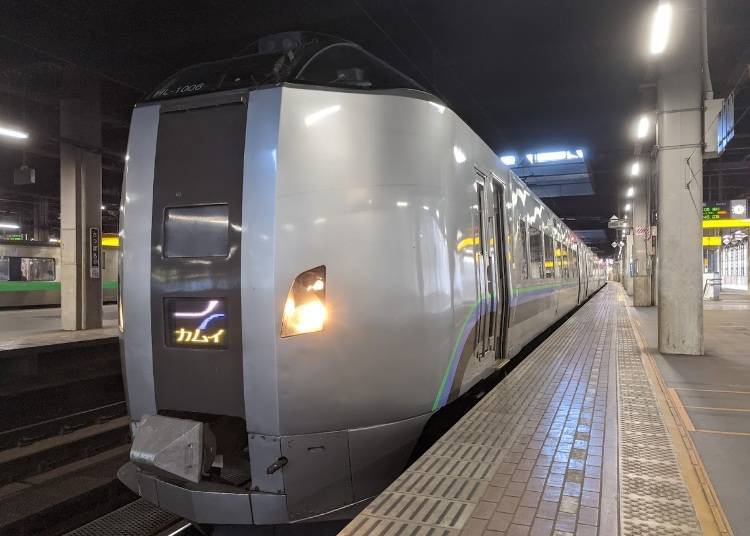
Limited Express “Kamui” or “Lilac” trains run from Sapporo Station to Asahikawa Station once an hour. Interestingly, around 70% of the world’s railways use 1,435 mm “standard gauge” rails, while Japan’s conventional lines are 1,067 mm “narrow gauge.”
1:30 p.m.: Warm up with some Asahikawa ramen
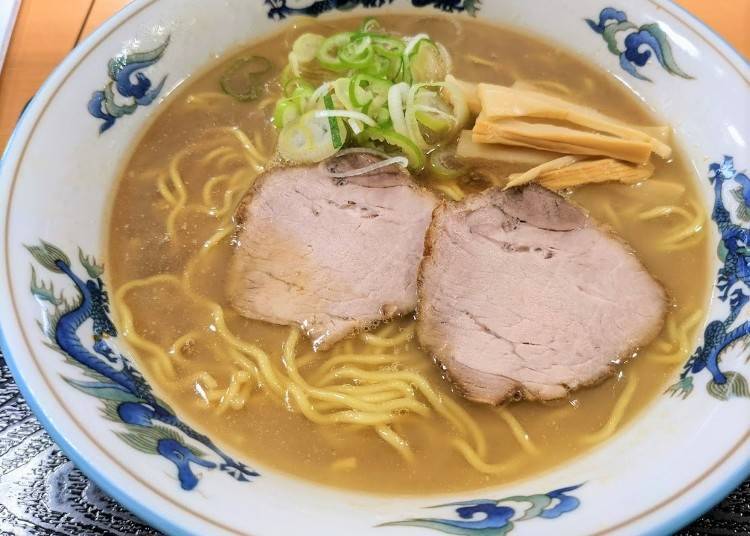
Asahikawa’s take on ramen is well-known and features a soy sauce-based “W soup” broth made with seafood, pork and chicken bones, and vegetables.
In the harsh subzero mid-winter temperatures, the soup’s lard-induced oily surface prevents the broth from cooling too quickly. There are many ramen shops in and around Asahikawa Station, and the most popular shops have lines of eager customers waiting outside before opening, even on weekdays.
2:40 p.m.: Ride the local “Sekihoku Main Line”
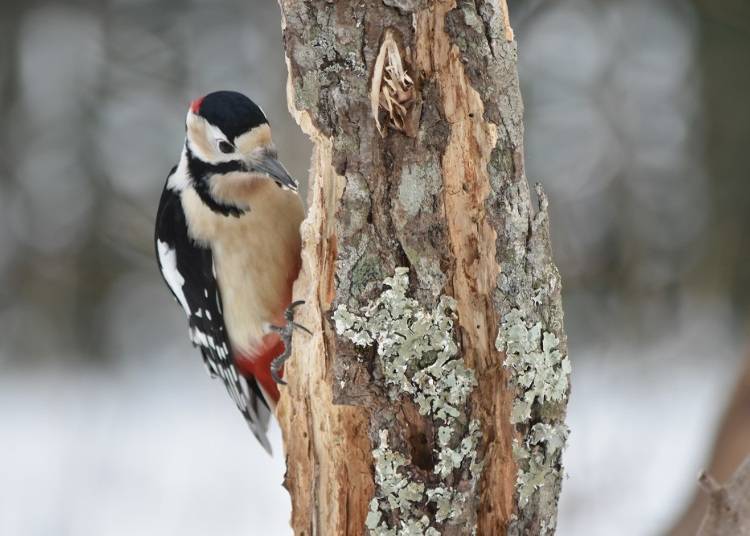
Next, transfer to the local Sekihoku Main Line at Asahikawa Station to reach Kamikawa Station in about an hour. It’s a “main line” in name only, with only a few departures per day.
The one- or two-car diesel trains roar out of the station, and as you pass through the city of Asahikawa, the number of houses gradually decreases, and you’re soon in nature’s embrace. It’s quite a distance from Kamikawa Station to your first day’s destination at Sounkyo Onsen, so it’s best to arrange transportation to the inn in advance.
7:00 p.m.: The Sounkyo Ice Waterfall Festival beautifully colors cold nights
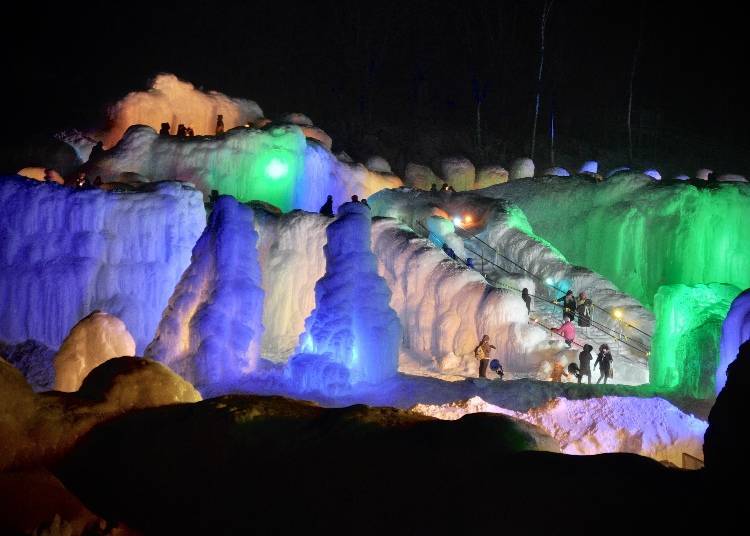
Sounkyo is located in Daisetsuzan National Park – a scenic area with cliffs that stretch for about 24km along the Ishikari River. Sounkyo Onsen is at the foot of Mt. Kurodake, which is lined with large hotels. The Sounkyo Ice Waterfall Festival, is held nearby every year from late January to mid-March.
The frozen Ryusei Falls and Ginga Falls, ice sculptures, and icy landscapes are beautifully lit up at night and serve as symbols of Sounkyo. There’s also ice climbing and an ice slide, but if you feel cold, you can always head back to your inn and warm up in the hot springs.
For further details, please check the official website, available in both English and Chinese.
-

-
Address
Sounkyo Onsen, Kamikawa-cho, Kamikawa-gun, Hokkaido, 078-1701
View Map -
Nearest Station
Kamikawa Station (Sekihoku Main Line)
- Phone Number 01658-2-1811
-
Address
Sounkyo Onsen, Kamikawa-cho, Kamikawa-gun, Hokkaido, 078-1701
Day 2: Sounkyo → Abashiri
9:50 a.m.: Head to the Sea of Okhotsk by bus
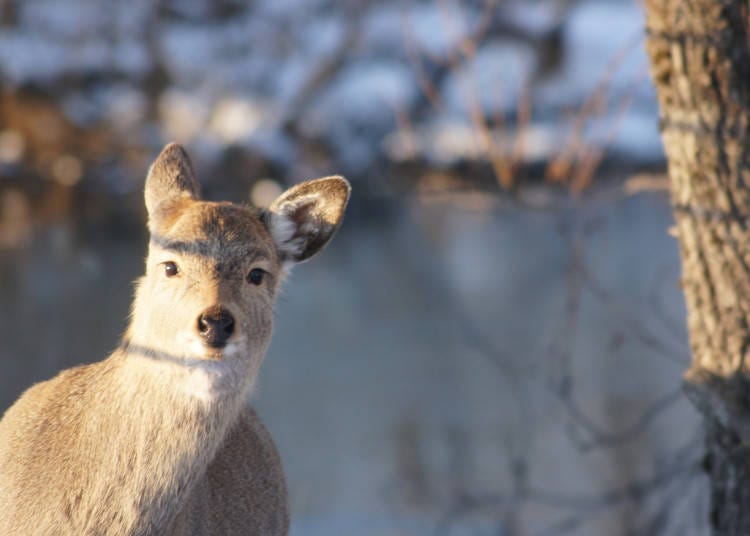
On Day 2, take a bus from Sounkyo Onsen to Abashiri and the Sea of Okhotsk. The trip takes about 3 hours and 40 minutes, and the mountains of the Daisetsu range, as seen from the bus, are spectacular. You’ll be able to experience the sheer size and natural beauty of Hokkaido with almost nothing artificial in sight.
2:00 p.m.: Enjoy Okhotsk Drift Ice Curry and a view of the drift ice floating in the Sea of Okhotsk

For a late lunch, the “Kinemakan” food court in the Ryuhyo-kaido Abashiri roadside station near the Abashiri Bus Terminal is recommended. Abashiri Prison has, on occasion, been the filming location for movies about prisoners like Abashiri Bangaichi and The Yellow Handkerchief of Happiness.
When choosing a dish made with local produce you should definitely try “Okhotsk Drift Ice Curry” (1,350 yen including tax), which resembles drift ice floating in the Sea of Okhotsk. Despite its deep blue color, the taste is mild and delicious. The food court’s menu includes English notation, making it easy to order.
-
Food Court “Kinemakan”フードコート「キネマ館」
- Address 5-1 Minami 3, Higashi 4, Abashiri, Hokkaido 093-0003
- Phone Number 0152-44-0688
・Hours: 11:00am - 4:30pm
・Admission: Free
・Closed: Open daily
3:00 p.m.: Depart from Abashiri Port on a sunset cruise
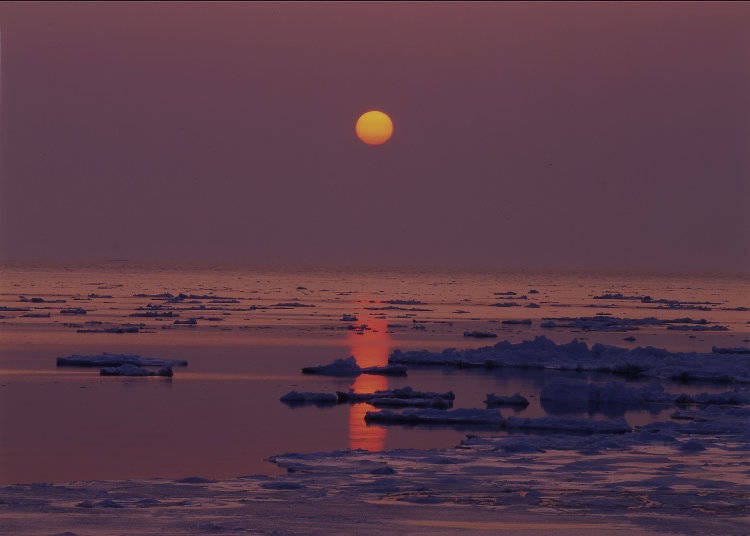
The “Abashiri Drift Ice Sightseeing and Icebreaker Ship” departs from the dock next to the Ryuhyo-kaido Abashiri roadside station. The icebreaker began operation in 1991, and from January 20th to April 3rd, the “Aurora” and “Aurora II” sail daily.
The last daily departure from mid-February to the end of March is called the “Sunset Cruise” and allows passengers to see the drift ice colored by the setting sun. If you’re lucky, you’ll spot Steller’s sea eagles and white-tailed eagles or seals resting on the ice. Be sure to wear warm clothes and enjoy sights seen only in Okhotsk in winter.
The official website is available in English and Chinese and provides additional details.
* Please be sure to complete the boarding procedure 15 minutes before departure.
* The cruise lasts about 1 hour. (Depending on drift ice conditions)
* When there is no drift ice, the cruise will tour Cape Notori instead.
* After March 15th, if the number of reservations on the previous day is 15 or fewer for each departure, departures may be canceled.
* If there is no drift ice, the sunset cruise will be canceled.
-

-
Address
Minami three Higashi 4-5-1, Abashiri-shi, Hokkaido, 093-0000
View Map -
Nearest Station
Abashiri Station (Sekihoku Main Line / Senmo Main Line)
10 minutes by car
- Phone Number 0152-43-6000
-
Address
Minami three Higashi 4-5-1, Abashiri-shi, Hokkaido, 093-0000
5:00 p.m.: Stay at Farm Inn Anima no Sato, where travelers can enjoy good conversation
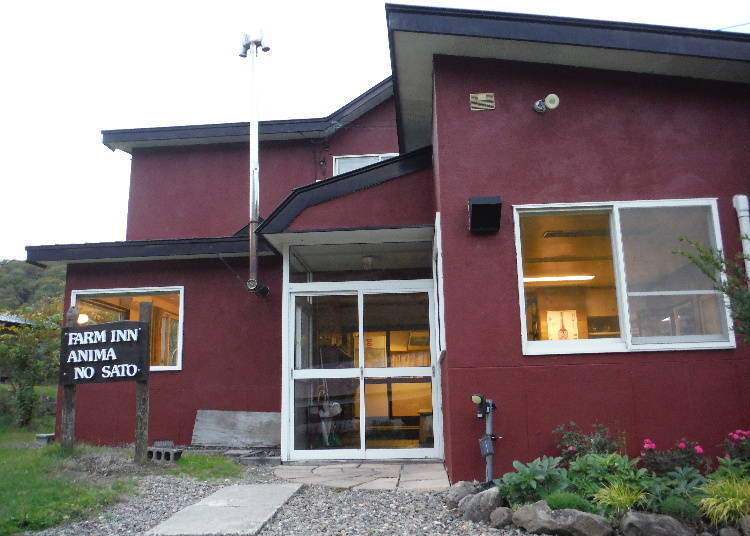
About 10 minutes by taxi from Ryuhyo-kaido Abashiri, “Farm Inn Anima no Sato” is a farm building that has been converted into an inn. There, guests can feel the warmth of being invited into a Japanese family. Lodgers range from families, training groups, and sports training camps to backpackers and solo travelers. It’s a great opportunity to spend time talking with all kinds of people over homemade dishes.
The inn is surrounded by nature, with squirrels, red foxes, and sika deer making occasional appearances. The inn itself is smaller, but the ranch grounds are large, and you’re sure to have a pleasant stay.
-
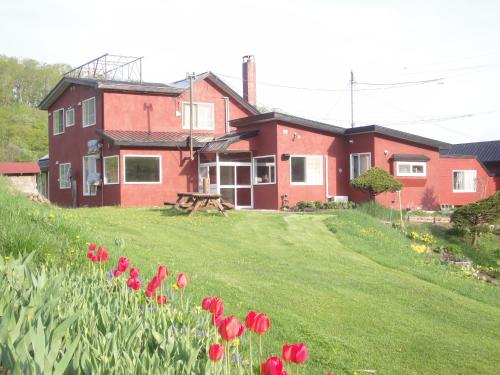
-
Address
Omagari 47-2, Abashiri, Hokkaido, 093-0045
View Map -
Nearest Station
Abashiri Station (Sekihoku Main Line / Senmo Main Line)
49 minutes on foot
Vacancy search, reservation
-
from 12,200JPY 1room, 2adults
Check with our partner site as the latest rates, rate details, and guest room requirements may vary.
-
Address
Omagari 47-2, Abashiri, Hokkaido, 093-0045
Day 3: Abashiri → Kushiro Marsh → Kushiro City
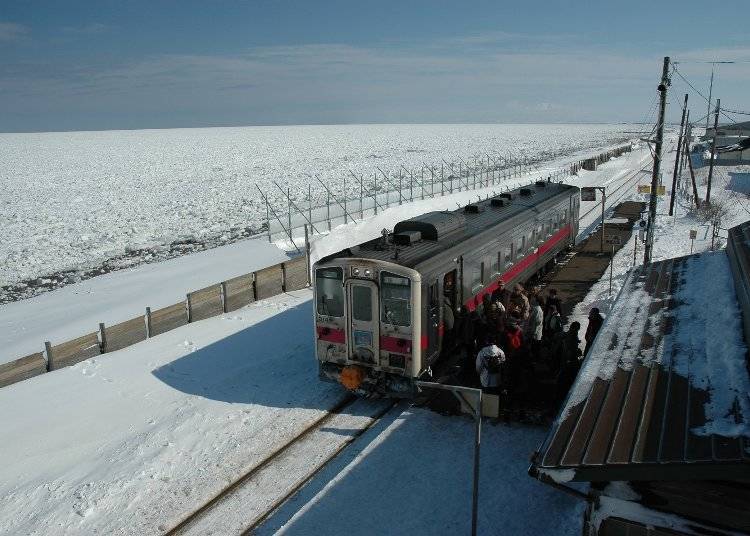
From Abashiri Station, take the “Semmo Honsen” to Kushiro Station. The Semmo Main Line is a 166.2km long line connecting Abashiri and Kushiro that began service in 1931.
Along the way, there are many iconic Hokkaido tourist spots like World Heritage Site, Shiretoko Shari Station, which is the gateway to the Shiretoko Peninsula, and Kawayu Onsen Station, which is the closest station to Lake Mashu, the world’s most transparent lake.
It takes about 3 hours to get to Kushiro, so be sure to buy an ekiben lunchbox at Abashiri Station before boarding the train.
3:00 p.m.: See the red-crowned cranes descending into the Kushiro Wetland
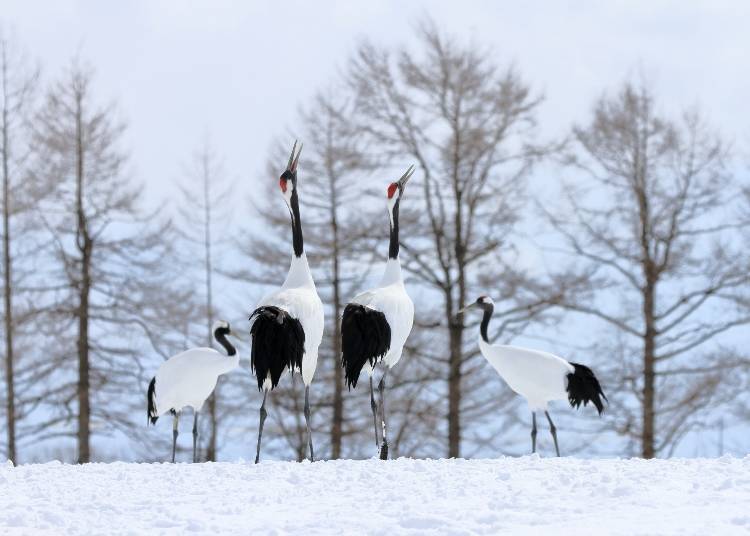
Red-crowned cranes can be found around Kayanuma Station near the Kushiro Wetland. The red-crowned cranes lost their natural nesting site due to flood damage in 1964. At the time, the birds were cared for by the Kayanuma station staff, and even though it’s now an uncrewed station, residents still look out for the birds.
If you don’t find any cranes at Kayanuma Station, you can see them at Kushiro City Red-crowned Crane Nature Park in Tsuruoka, Kushiro City (about 30 minutes from Kushiro Station by taxi).
The park was opened in 1958 when five Japanese cranes were released to protect the endangered species and allow their numbers to replenish. Currently, about 20 cranes live there throughout the year.
There is no foreign language notation in the park, but for the simple purpose of bird watching, that won’t cause any inconvenience.
-

-
Address
112, Tsuruoka, Kushiro-shi, Hokkaido, 084-0926
View Map -
Nearest Station
Kushiro Station (Nemuro Main Line / Hanasaki Line)
55 minutes by bus
- Phone Number 0154-56-2219
-
Address
112, Tsuruoka, Kushiro-shi, Hokkaido, 084-0926
6:00 p.m.: Try Robatayaki and Zangi, foods that originated in Kushiro

Blessed with excellent fishing grounds, Kushiro is one of the best food cities in Hokkaido. Among the dishes said to have originated in Kushiro, “robatayaki” and “zangi” are recommended.
Robatayaki is made by grilling fresh seafood over charcoal before serving it to diners on long wooden spatulas.
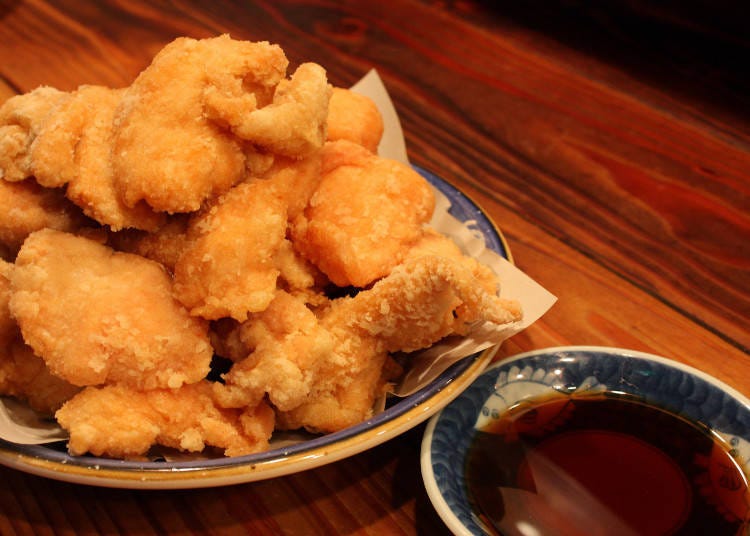
Zangi looks like fried chicken, although there is some debate about the difference between zangi and fried chicken. Originally served at a yakitori restaurant, it’s rumored that zangi was simply made by chopping a full broiler chicken into smaller pieces.
Zangi is served with sweet, spicy sauce, and these days there are even variations made with fried octopus, shellfish, or other fish.
Recommended accommodation in Kushiro City
-

-
Address
3-7 Nishikicho, Kushiro-shi, Hokkaido, 085-0016
View Map -
Nearest Station
Kushiro Station (Nemuro Main Line / Hanasaki Line)
15 minutes on foot
-
Address
3-7 Nishikicho, Kushiro-shi, Hokkaido, 085-0016
-

-
Address
2-1 Kita Odori, Kushiro-shi, Hokkaido, 085-0015
View Map -
Nearest Station
Kushiro Station (Nemuro Main Line / Hanasaki Line)
14 minutes on foot
-
Address
2-1 Kita Odori, Kushiro-shi, Hokkaido, 085-0015
Day 4: Kushiro → Ikeda Town → Obihiro → Tokachigawa Onsen
9:00 a.m.: Create a unique “Katte Don” seafood bowl
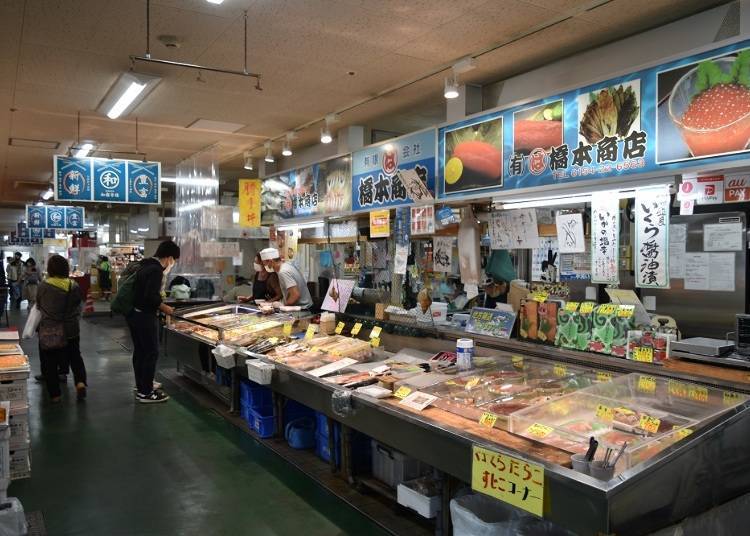
Instead of having breakfast at your hotel in Kushiro, order some “Katte Don” at Kushiro Washo Ichiba market, a 5-minute walk from Kushiro Station.
You can buy white rice at the market’s side dish section, buy the sashimi of your choice at the seafood restaurant, and create your own original seafood bowl. There is no foreign language notation, so if you’re interested in a particular item, just ask, “What is this?”
Your day’s journey is just beginning, so after you’ve eaten your fill, take the 11:30 Limited Express “Ozora” from JR Kushiro Station and head west.
-

-
Address
13-25, Kuroganecho, Kushiro-shi, Hokkaido, 085-0018
View Map -
Nearest Station
Kushiro Station (Nemuro Main Line / Hanasaki Line)
3 minutes on foot
- Phone Number 0154-22-3226
-
Address
13-25, Kuroganecho, Kushiro-shi, Hokkaido, 085-0018
12:30 p.m.: Sample Tokachi wine at Ikeda Wine Castle
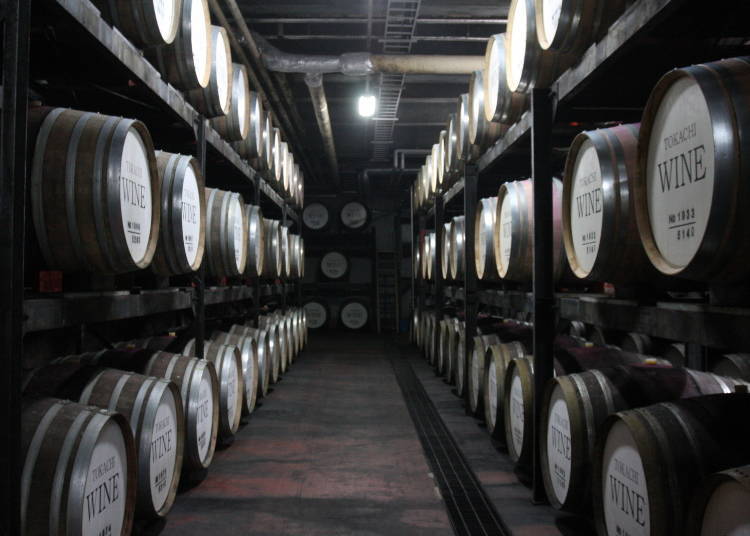
In recent years, Hokkaido has experienced an unprecedented Japanese wine boom, with about 50 wineries newly established.
Tokachi Wine, first produced in Ikeda-cho in 1963, was one of the pioneers of Hokkaido wine production. A 10-minute walk from Ikeda Station, the Ikeda Town Wine and Wine Research Institute’s winery, which produces Tokachi Wine and has a wide variety of vintages, is also called the “Wine Castle” because it resembles a European castle from the Middle Ages.
Free winery mini-tours are offered on Mondays, Wednesdays, and Fridays from 11:00 to 11:30am and 2:00 to 2:30pm.
Full-scale paid tastings are held on Saturdays, Sundays, and public holidays only from 11:00am - 12:15pm and 2:00 - 3:15pm.
The winery’s website is available in English, Korean, and Chinese. Winery tours may be canceled depending on various circumstances, so be sure to check the website for further details.
-
Ikeda Wine Castleいけだワイン城
- Address 83 Kiyomi, Ikeda-cho, Nakagawa-gun, Hokkaido, 083-0002
- Phone Number 015-572-2467
・Hours: 9:00am - 5:00pm
・Admission: Free
・Closed: New Year holidays
4:30 p.m.: Bet on the world’s only “Ban’ei Horse Racing” in Obihiro
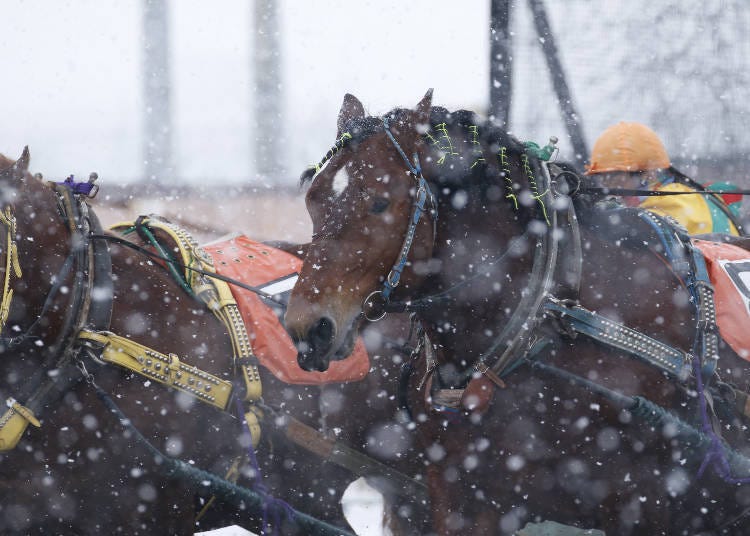
It takes about 30 minutes by regular train from Ikeda Station to Obihiro Station. From the station’s south exit, it’s a 7-minute taxi ride to Ban’ei Tokachi, where you can watch Ban’ei Horse Racing, in which draft horses race while pulling 1-ton sleds.
It used to be held throughout Hokkaido, but now Obihiro’s Ban’ei Tokachi is the only race of its kind in the world. In times past, an event known as “Festival Banma” was held to test the strength of the workhorses so important during Hokkaido’s pioneering era and eventually developed into Ban’ei Horse Racing.
Basic betting is the same as the Derby system. The sight of rising dust as the horses overcome two obstacles, large and small, is impressive.
Held mainly on Saturdays, Sundays, and Mondays, Race 1 starts around 2:00pm, and Race 12 ends after 8:00pm.
The official website is available in English, Korean, and Chinese, so be sure to check there for more details.
-

-
Address
9, Nishi-13-jominami, Obihiro-shi, Hokkaido, 080-0023
View Map -
Nearest Station
Obihiro Station (Nemuro Main Line)
7 minutes by car
- Phone Number 0155-34-0825
-
Address
9, Nishi-13-jominami, Obihiro-shi, Hokkaido, 080-0023
7:00 p.m.: Enjoy Tokachigawa Onsen, featuring a rare moor hot spring

After enjoying the horse racing, take a taxi for about 30 minutes to today’s accommodation, Tokachigawa Onsen. This was selected as a Hokkaido heritage site in 2004 and features a “moor hot spring,” a rarity in the world.
Moor springs are hot springs in which plants grew naturally in ancient times and accumulated to form a lignite (brown coal) layer, through which the spring now flows. Due to its beautifying benefits that grant smooth skin, it is also called “Bijin no Yu.”
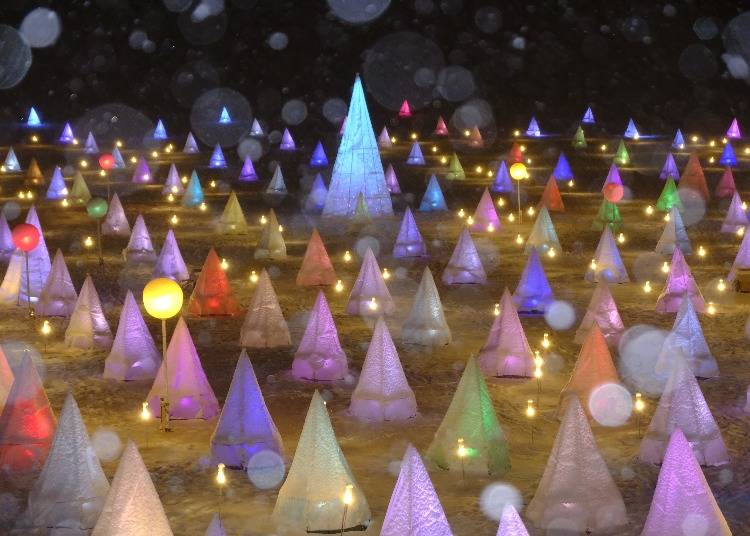
Every year from late January to late February, “Sairinka” is held at the hot spring town’s Tokachigaoka Park. At this event, around 600 light bulbs and LEDs are used to create a frigid fantasy show of light and sound.
-
Sairinka®彩凛華®
- Address 14-1 Tokachigawa Onsen, Otofuke-cho, Kato-gun, Hokkaido 080-0262
・TEL: 0155-32-6633 (Otofuke Town Tokachigawa Onsen Tourism Association)
・Hours: 7:00pm - 9:00 pm
・Admission: Free
・Closed: Open daily
Recommended accommodations in Tokachigawa Onsen
-

-
Address
Tokachigawa Onsenminami 14-2, Otofuke, Hokkaido, 080-0263
View Map -
Nearest Station
Satsunai Station (Nemuro Main Line)
Vacancy search, reservation
-
from 20,237JPY 1room, 2adults
Check with our partner site as the latest rates, rate details, and guest room requirements may vary.
-
Address
Tokachigawa Onsenminami 14-2, Otofuke, Hokkaido, 080-0263
Day 5: Obihiro → Tomamu → New Chitose Airport
11:00 a.m.: Enjoy winter activities at Hoshino Resort Tomamu
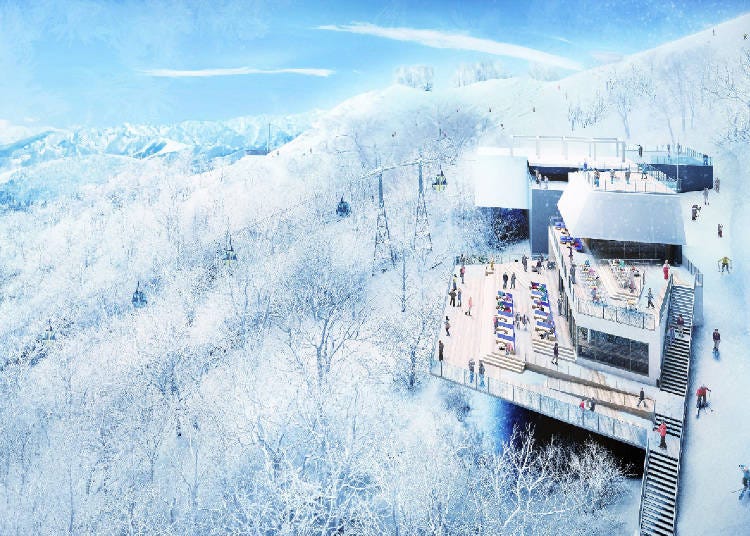
On the final day, ride a Limited Express train for about an hour from Obihiro to Tomamu, where you can enjoy winter activities to the fullest. Hoshino Resorts Tomamu has a ski slope that will satisfy both beginners and advanced skiers, as well as a variety of other winter activities.
The new Muhyo Terrace observation deck was completed in the summer of 2021 and is open from December 1, 2021 to March 31, 2022.
It offers a spectacular view of the snowy mountains and the chance to see the “rime ice” phenomenon, which occurs when moisture and fog in the air freeze to tree branches when temperatures are about 2 to 10 degrees below freezing.
Assistance in multiple languages is available so you can spend a relaxing last day in Hokkaido. To avoid missing your flight, keep in mind that it’s about 80 minutes by limited express train from Tomamu to New Chitose Airport.
-

-
Address
Nakatomamu, Shimukappu-mura, Yuufutsu-gun, Hokkaido, 079-2204
View Map -
Nearest Station
Tomamu Station (Sekisho Line)
5 minutes by bus
- Phone Number 0167-58-1111
-
Address
Nakatomamu, Shimukappu-mura, Yuufutsu-gun, Hokkaido, 079-2204
6:00 p.m.: Enjoyment right up to the time of your flight at New Chitose Airport
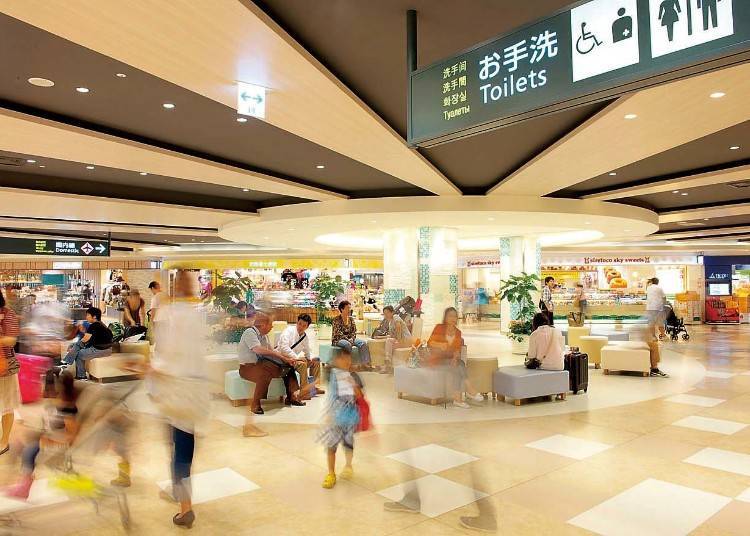
There are so many things to do at New Chitose Airport, you could mistake it for a mall. There are theme parks, movie theaters, and hot springs, so there’s no way you’ll get bored waiting for your flight.
-

-
Address
987-22, Bibi, Chitose-shi, Hokkaido, 066-0012
View Map -
Nearest Station
New Chitose Airport Station (Chitose Line)
- Phone Number 0123-23-0111
-
Address
987-22, Bibi, Chitose-shi, Hokkaido, 066-0012
Hokkaido in winter is a dynamic experience
As your plane takes off, the street lights below will shine through your window before disappearing into the jet-black night, but the memories of your trip will still be reflected in the window even when nothing else can be seen.
Winters in Hokkaido are long and cold, but people and animals still thrive here, and you can create unforgettable memories in this vibrant northern land of winter.
Text by: Masakazu
*Information in this article is accurate as of January 2022. Please check official websites for the latest information.
English translation by Gabriel Wilkinson
- Area
- Category
*Prices and options mentioned are subject to change.
*Unless stated otherwise, all prices include tax.
Popular Tours & Activitiess
Recommended places for you
-

Farm Tomita
Other Nature
Furano / Biei / Sounkyo
-
Appealing

Kanemori Red Brick Warehouse
Shopping Malls
Hakodate
-
Appealing

Rukku and Uohei
Izakaya
Sapporo / Chitose
-
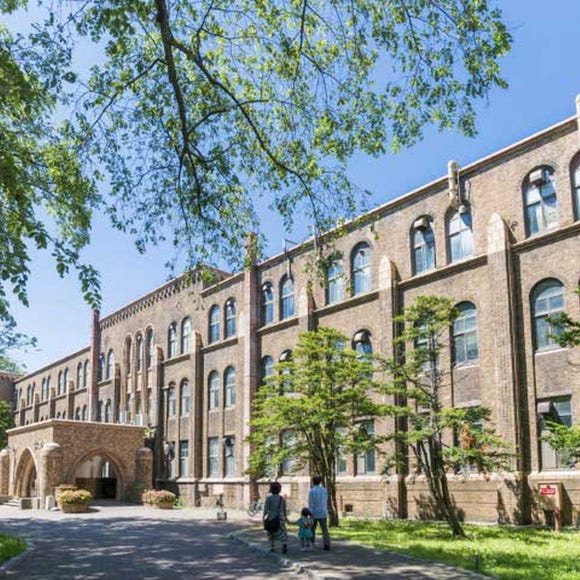
Hokkaido University
Other Architecture
Sapporo / Chitose
-
Appealing

Odori Park
Parks
Sapporo / Chitose
-

Sapporo Clock Tower
Landmarks
Sapporo / Chitose
-

BIGGEST SALE ALERT! SATUDORA Tax-Free Winter Sale: Stack Coupons for Massive Savings!
by: Guest Contributor
-

Great Local Eats: 5 Expert-Recommended Local Chain Restaurants in Hakodate
by: Nobuka Kawashima
-

Beyond Hakodate and Matsumae: Enjoy the Hidden Gems of Hokkaido’s Donan Area
-

Scenic Road Trip from Hakodate to Matsumae: Stunning Views, Traditions, and Tasty Delights
by: Nobuka Kawashima
-
Ad

Cycling Through Hokkaido: Discover the Beauty of Memuro and the Tokachi Plains
-
Ad

Smart Ways to Avoid Crowds and Enjoy a Safe, Comfortable Trip to Otaru.
-

8 Fun Things to do in Hokkaido in Winter
by: Andy Cheng
-

10 Important Japanese Phrases to Know Before You Enter a Japanese Convenience Store!
by: Teni Wada
-

Tokyo Train Map: Your Essential Guide to Subways and Railways
-

8 Unfamiliar (But Totally Normal) Customs in Japan!
-

Hokkaido Winter Weather Guide (December–February) + Local Editor's Outfit Tips
by: Nemi Lin
-

Enjoy Hokkaido's Winter Magic: 2025 Guide to Snowy Adventures & Skiing
- #best sushi hokkaido
- #things to do hokkaido
- #best ramen sapporo
- #what to bring to japan
- #new years in tokyo
- #what to buy in ameyoko
- #japanese nail trends
- #what to do in odaiba
- #onsen tattoo friendly tokyo
- #daiso
- #best sweets otaru
- #japanese fashion culture
- #best nature furano
- #japanese convenience store snacks
- #best japanese soft drinks














